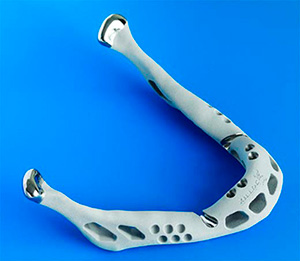4.10 Capabilities and potential of additive manufacturing
Conventional manufacturing methods like casting of metals or injection moulding of polymers are, at present, far less costly than additive manufacturing for mass production. However, AM is more flexible, and quicker and less expensive when producing a small number of the parts, let alone its unique capability of producing complex shapes or geometries that might be very difficult, if not impossible, when using conventional manufacturing methods. Some AM techniques are even capable of depositing multiple materials to make complex components comprising several parts each made from a different material.
Interest in 3D printing is growing very fast and applications are to be found as far afield as the food industry (chocolate), construction (concrete) and in creating decorative objects like in Figure 69. But perhaps the most exciting possibilities are in the medical sector. 3D printing technology has been applied to reconstructive surgery in the form of implants that are customised to a patient's needs. Figure 75 shows an actual 3D printed implant used to replace the diseased bone of an 80-year old woman in Holland. Efforts are also currently focused on 3D printing of body tissue with the tantalising prospect of being able to recreate replacement organs in the laboratory for transplant back into the human body.

